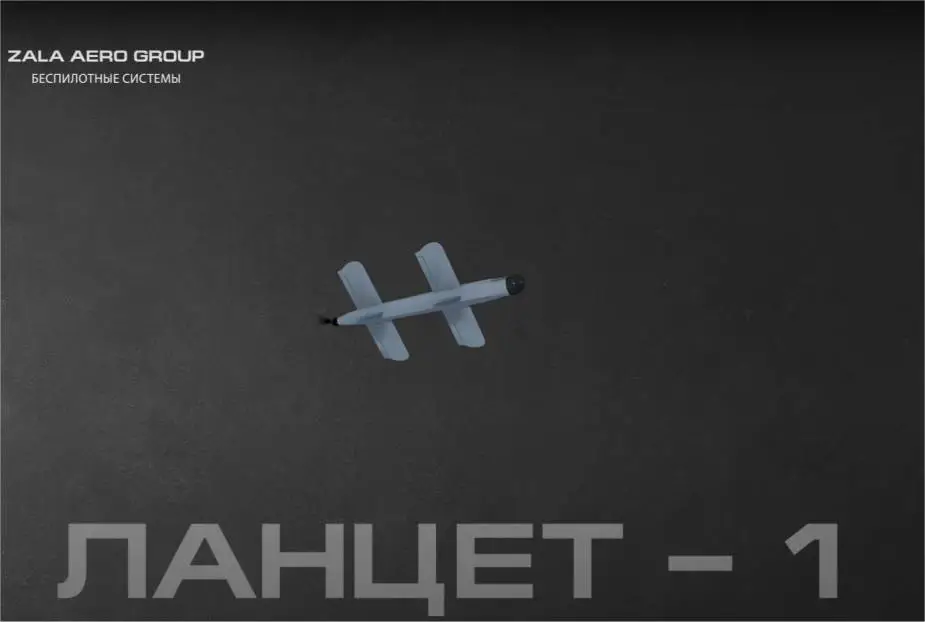- Army
- Air Defense Systems
- Anti-tank systems and vehicles
- Armored Vehicles
- Armoured personnel carriers
- Artillery Vehicles and Weapons
- Command Post
- Communication Vehicles and Systems
- Electronic Warfare
- Engineer | Maintenance Vehicles
- Infantry Fighting Vehicles
- Main Battle Tanks
- Missiles
- Tactical and Logistic Vehicles
- Radars
- Unmanned Systems
- Weapons
- Navy
- Air
Lancet-1
Lancet-1
Loitering munition / Suicide or Kamikaze drone - Russia

Description
The Lancet-1 is a Russian-made loitering munition also called kamikaze our suicide drone designed, developed, and produced by the Company Zala Group, a subdivision of the Kalashnikov Group. The drone was unveiled in June 2019 during the Russian Military Technical Forum, a defense exhibition that was held near Moscow, Russia. It has been designed to perform reconnaissance and attack missions. The Lancet was deployed for the first time for combat operations in Syria in November 2020. Citing information from the Russian State Defense company ROSTEC, the Lancet has been widely deployed during the conflict Russia - Ukraine War 2022. Several videos were published on Social Networks showing how Russian strike drones using Lancet unmanned aerial vehicles (UAV) to destroy Ukrainian military equipment and combat vehicles during the war in Ukraine.
Lancet-1 variants:
- Lancet-3: Larger version weighing 12 kg with a payload of 3 kg.
Technical Data
| Design |
|
The Lancet-1 is the smaller version in the Lancet family. The design consists of a cylindrical fuselage with two pairs of X-shaped wings mounted at the front and rear of the fuselage. This design is used to reduce the dimensions of the bearing planes while maintaining the required lifting force. The engine is located at the rear of the fuselage while the optics and warhead are on the front. It has a weight of 5 kg.
|
| Air Mobility |
|
The Lancet-1 is powered by an electric motor driving a two-blade propeller unit in a pusher arrangement. Electric. It can fly at a speed from 80 to 110 km/h with an endurance of 30 min and a maximum range of 40 km.
|
| Payload |
| The Lancet-1 is equipped with a HE (High Explosive) fragmentation warhead which has a weight of 1 kg. The drone is also equipped with a TV guidance unit that allows the operator to control the drone even on the terminal stage of flight. It also features an optical-electronic guidance unit that can be pre-programmed before the flight. |
| Combat use |
| The Lancet-1 is designed primarily to conduct reconnaissance missions. The drone is launched with a catapult that can be installed on the ground and also on a boat. It can fly in fully autonomous mode thanks to onboard artificial intelligence or a pre-programming system. Russia claims its Lancet loitering munition has a first-of-its-kind anti-laser jamming technology that makes it immune to many anti-drone systems. |
Specifications
| Type | Targets |
| Small loitering munition or reconnaissance drone | Anti-personnel and light combat vehicles |
| Country users | Weight |
| Armenia, Azerbaijan, Russia | 5 kg |
| Designer Country | Speed |
| Russia | 80 to 110 km/h |
| Warhead | Range |
| HE (High Explosive) fragmentation | 40 km |
| Operator | Endurance |
| 1 | 30 min |
Details View
 |
|
Pictures - Video
{gallery}stories/east_europe/russia/unmanned_systems/lancet-1/pictures{/gallery}


























